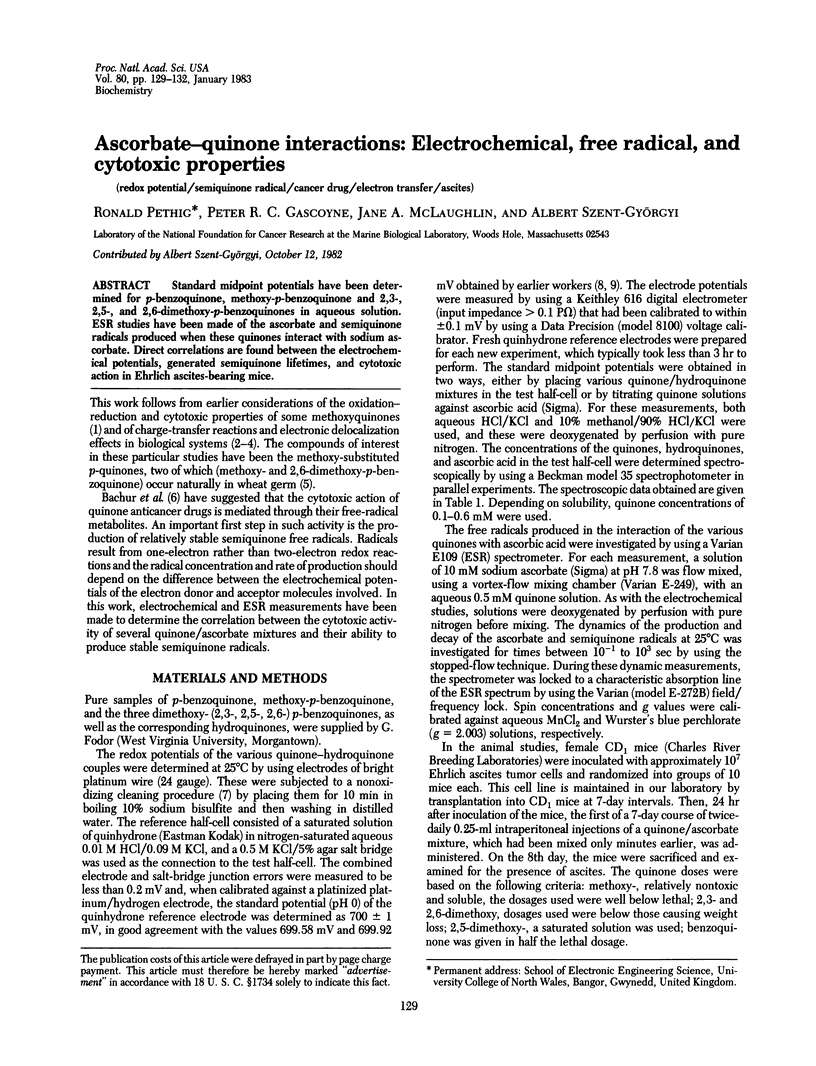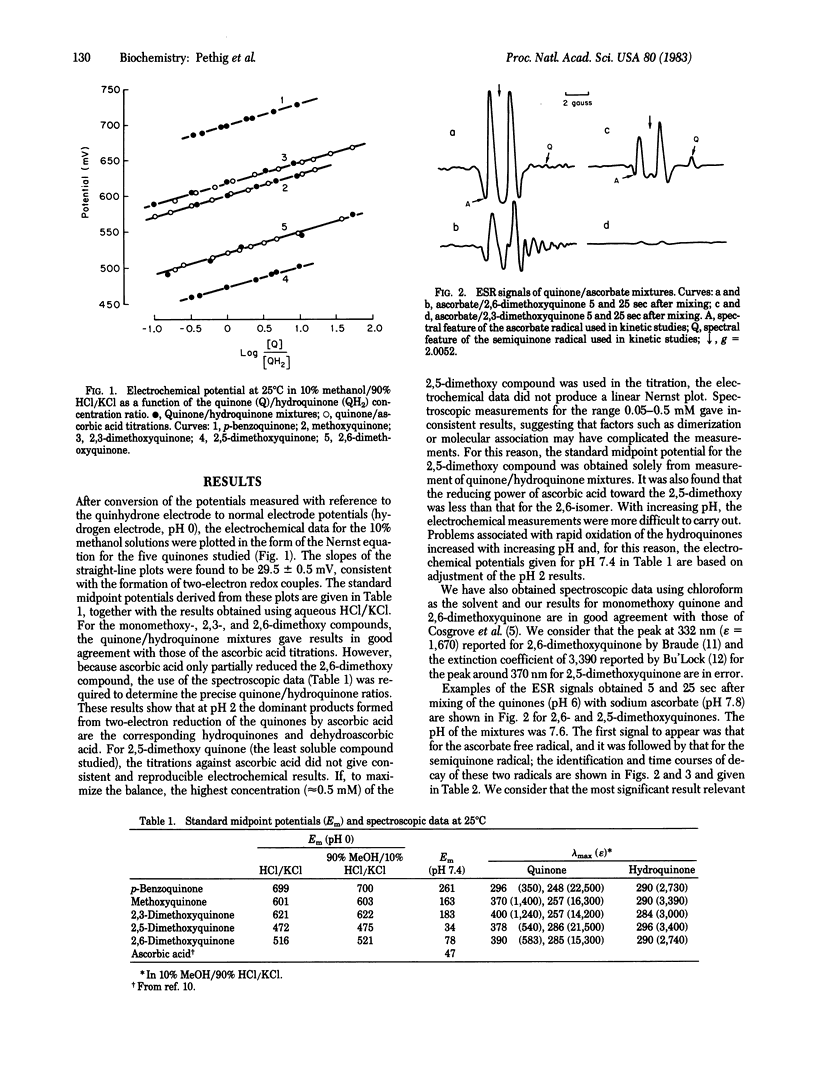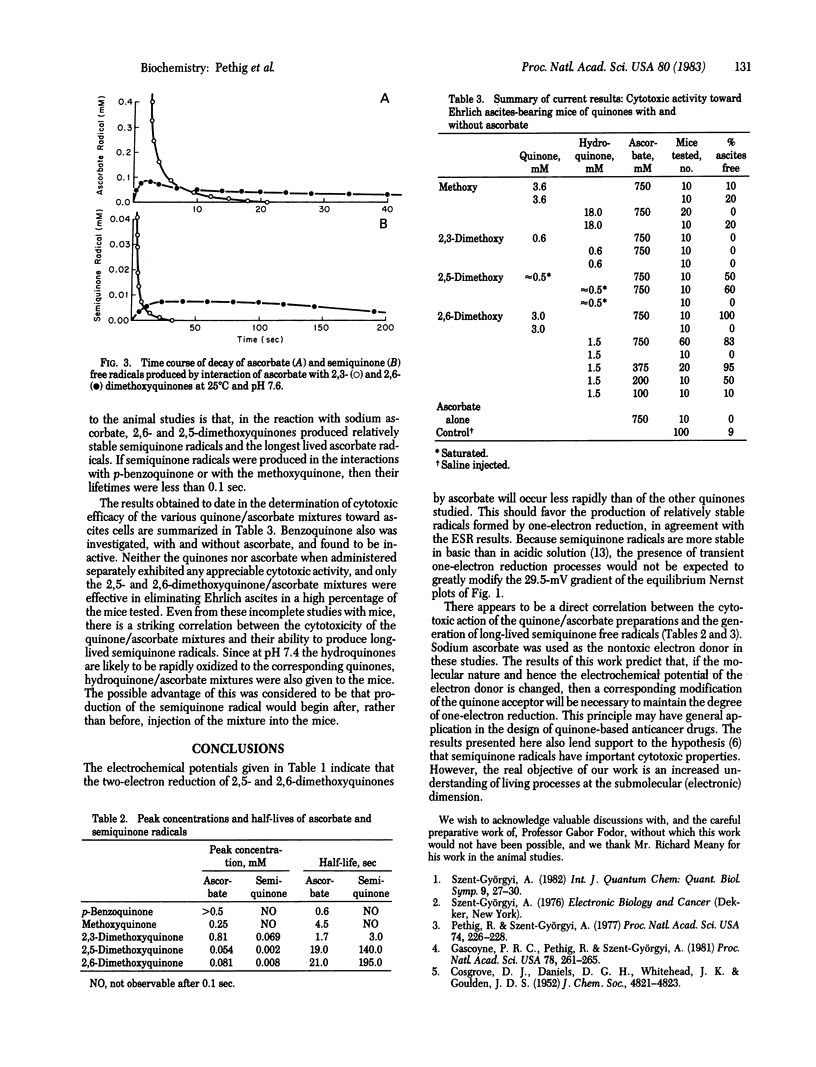Abstract
Standard midpoint potentials have been determined for p-benzoquinone, methoxy-p-benzoquinone and 2,3-, 2,5-, and 2,6-dimethoxy-p-benzoquinones in aqueous solution. ESR studies have been made of the ascorbate and semiquinone radicals produced when these quinones interact with sodium ascorbate. Direct correlations are found between the electrochemical potentials, generated semiquinone lifetimes, and cytotoxic action in Ehrlich ascites-bearing mice.
Full text
PDF



Selected References
These references are in PubMed. This may not be the complete list of references from this article.
- Bachur N. R., Gordon S. L., Gee M. V. A general mechanism for microsomal activation of quinone anticancer agents to free radicals. Cancer Res. 1978 Jun;38(6):1745–1750. [PubMed] [Google Scholar]
- Gascoyne P. R., Pethig R., Szent-Györgyi A. Water structure-dependent charge transport in proteins. Proc Natl Acad Sci U S A. 1981 Jan;78(1):261–265. doi: 10.1073/pnas.78.1.261. [DOI] [PMC free article] [PubMed] [Google Scholar]
- Pethig R., Szent-Györgyi A. Electronic properties of the casein-methylglyoxal complex. Proc Natl Acad Sci U S A. 1977 Jan;74(1):226–228. doi: 10.1073/pnas.74.1.226. [DOI] [PMC free article] [PubMed] [Google Scholar]
- YAMAZAKI I., PIETTE L. H. ELECTRON PARAMAGNETIC RESONANCE OF UNDISSOCIATED P-BENZOSEMIQUINONES. J Am Chem Soc. 1965 Mar 5;87:986–990. doi: 10.1021/ja01083a009. [DOI] [PubMed] [Google Scholar]


